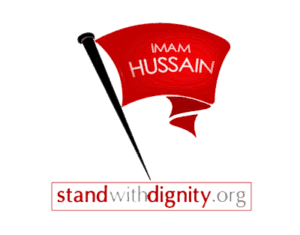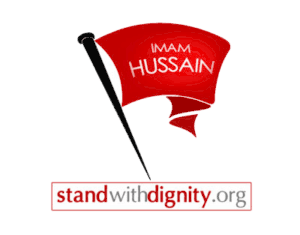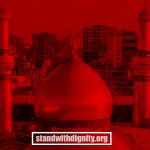By Dr Bashir A. Datoo
Karbala began with Saqifah. Prophet Muhammad (s) had just passed away and, while his family was busy with the burial rites, some of his companions met at the assembly hall in Medina to plot their next move. They decided to bypass the declared successor of the Prophet, namely, Imam Ali b. Abi Talib (a), and to appoint one among themselves, viz, Abu Bakr, as the khalifa. This was a direct challenge to the leadership of the Imams from the progeny of the Prophet. How were they to react?
A Painful Trade-Off
The first point that should be stressed is that the Imams were not concerned about themselves, only about the type of Islamic leadership and the welfare of the believers. Thus, while they repeatedly asserted their right to succession they, nevertheless, subjugated their own self-interest to the larger good of the society. Next, it should be pointed out that the Imams were put in a position in which they had to make a trade-off. This was, however, an unusual trade-off in that it was not between the better of two attractive outcomes, but between the lesser of two evils.
One set of considerations in the trade-off involved the nature of the theocratic state – the extent to which the Islamic state would continue to uphold the principles established by the Prophet. Another set of considerations in the trade-off involved the state of the Muslim ummah – the degree to which it would remain united in adhering to the religion taught by the Prophet.
The Imams had to make a painfully agonizing trade-off between these two sets of considerations. This is evident from the remark made by Imam Ali in his famous khutba of Ash Shaqshiqiyya. The Imam says that he had two alternatives: “either to fight for my rights … or [to] patiently endure the bereavement.” After carefully weighing the alternatives, the Imam chose the latter course even though it was “extremely painful and saddening” to him. The outcomes of the trade-off made by the first three Imams were all different because these considerations carried different levels of risk during the respective periods of their imammat.
Outcome of Imam Ali’s Trade-Off: Non-Resistance
The functions of the leader of an Islamic state, as enunciated by Ayatullah Behishti and Hujjatul-Islam Bahonar (in their Philosophy of Islam), are four-fold:
- Oversee all functions of government, including maintenance of law and order and administration of justice
- Propagate Islam and expand its social and governmental influence
- Engage in the exposition of the Qur’an and divine law
- Serve as a role model such that people can emulate his behavior and attain salvation under his guidance.
The first two functions require control of the political apparatus and so could fall under the purview of the khalifas. The Sunnis maintain that the khalifas share the third function with other companions of the Prophet and, indeed, they called upon Imam Ali to help them out in this regard. It could be argued, therefore, that they had the potential to perform two-and-a-half of the four functions.
The Prophet had established the city-state of Medina a mere ten years before his demise. True, during this period he had vanquished his Mecccan adversaries and had broken the back of the Medinese Jewish resistance. True, he felt confident enough to look beyond the Arabian Peninsula and to invite rulers of neighboring states and heads of other religions to embrace Islam. Nevertheless, Islam was still in its infancy and a civil war would not only have divided the Muslim ummah, but also invite the erstwhile adversaries to regroup and challenge the Islamic state again. These fears were not unfounded as is borne out by events during the period of Imam Ali’s own khilafat when he was forced to fight three civil wars and when the Ummayads used their base in Syria to challenge his leadership of the Muslim empire.
Imam Ali decided that it was not worth risking the unity of the frail ummah for an ideal theocratic state. Despite the encouragement of some hypocritical companions of the Prophet to claim his right to succession, Imam Ali decided to offer no resistance. He would, in fact, cooperate with the new regime whenever it was in the interest of Islam, but he would neither confer legitimacy to the political process nor to the three khalifas who emerged as rulers from that process.
Outcome of Imam Hasan’s Trade-Off: Negotiation
Upon the death of Imam Ali who had ruled as the fourth khalifa, the governor of the powerful province of Syria, Muawiya b. Ali Sufyan, wished to wrest control of the empire from the proclaimed successor, Imam Hasan b. Ali (a). In a display of force, Muawiya immediately marched towards Iraq, where Imam Hasan was based, with an army of 60,000. Simultaneously, however, he entered into a lengthy correspondence with the Imam. It is clear from this correspondence that he recognized Imam’s closeness to the Prophet and his authority in religion. But he argued that he was best suited to provide political leadership and to protect the subject people. He thus conceded that the Imam was a superior leader, but maintained that he was a better politician. Muawiya, in other words, made explicit what was so far implicit, the separation of church and state. Indeed, after the treaty had been concluded, Imam Hasan in his address to the Kufans made a distinction between a “khalifa” (caliph) and a “malik” (king). Muawiya himself often affirmed Imam’s statement by declaring that he was “the first king in Islam.”
Muawiya initiated peace negotiations because he did not wish to fight. For he did not just seek political power, but also legitimization of his authority. Imam Hasan entered into negotiations because he could not fight. For his commanders and foot soldiers had been lured away to Muawiya’s army by rumors and bribes, and he could not be seen by historians to have turned down an offer of an unconditional peace from Muawiya as he was invited to stipulate the terms of the peace treaty.
Imam Hasan was thus left with no choice but to agree to a peace treaty. However, he sought to reverse both the ideological orientation of the state and the process of succession. One of the terms of the treaty that he laid down was that Muawiya would rule according to the book of Allah and the sunnah of the Prophet, clearly implying that he had not hitherto adhered to these twin principles as the governor of Syria. Another term of the treaty was that Muawiya would not appoint or nominate anyone after him and, evidently, there was a tacit understanding that the khilafat would revert to Imam Hasan.
Outcome of Imam Hussain’s Trade-Off: Confrontation
Muawiya arranged for Imam Hasan to be killed. He then violated a key provision of the treaty by maneuvering to have his son, Yazid b. Muawiya, recognized as his heir apparent. Imam Hussain b. Ali’s hands were tied while Muawiya was still alive for he had to honor the treaty that his brother had signed. Only when Yazid succeeded as the hereditary ruler of the Muslim empire was Imam Hussain free to revisit the trade-off.
While successive rulers purported to follow the dictates of the Qur’an, their interpretation of it was increasingly at variance with the teachings of the Prophet. While these rulers acknowledged the traditions of the Prophet as the next most important source of legislative guidance, they increasingly sought to fabricate the ahadith to support their own political agendas. To compound it all, Yazid, unlike his pretentious predecessors, had no use of religion and openly held its norms in contempt. Within half a century of the Prophet’s death, a point had been reached where the survival of the true religion of Islam was at stake. So it is that that in the will that Imam Hussain left before his departure from his hometown of Medina for his ultimate destination of Karbala, he wrote that he set out to “reform the religion of my grandfather and of my father.” He sought to redirect the ummah to the pristine, original Islam, away from the adulterated Islam that followed.
Imam Hussain thus decided that confrontation with Yazid was his only resort. However, he chose not to confront Yazid with an army of soldiers, for historians would have undoubtedly questioned his motive. Instead, he decided to confront him with a band of martyrs, for the best way to rejuvenate the ummah was, in the words of the late Ayatullah Mutahhari, to “inject blood into its veins.”
Conclusion
With the passage of time, the number of functions that an Islamic leader should perform had successively dwindled from four at the time of the Prophet (and briefly reinstated during the reign of Imam Ali) down to one during the time of Yazid. There had been a sea change from an exemplar, theocratic state to a despotic, secular one. The Imams, accordingly, had to ratchet up their response. There was now a shift from a passive policy to an activist one towards the official rulers of the Muslim empire.
Arabs had the age-old tradition of doing bayyah, swearing an oath of loyalty to their tribal chiefs. The rulers used this tradition to ask prominent members of the community to swear allegiance to their regime. Abu Bakr, as the first khalifa, had the sense to waive this requirement for Imam Ali upon a threat issued by Sayyida Fatima (a). He averted a crisis. Muawiya, as the founder of the Umayyad dynasty, had the smarts to avoid the need for asking for an oath from Imam Hasan. A crisis did not arise. Yazid, as the next ruler of that dynasty, was foolish to demand from Imam Hussain an endorsement of his regime and to couple it with the threat of “or else.” He precipitated a crisis. Consequently, Karbala had to happen.











